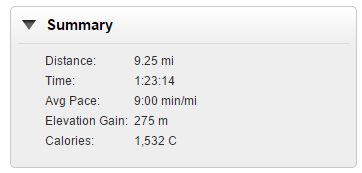Recovering From The Big One - 25th Jan. 2013
Leaving Hospital & Returning To Reality
There was no escaping the fact this was the strangest I'd felt in my life. I've never really been to hospital for anything, I'm a healthy guy and the worst I get (touch wood) is a cold every winter and that's down to my own decision of wearing shorts despite it being near zero temperatures. The pain was non-existent for the first few days after the op as the numbness was still in effect but looking at my legs and not being able to move them was a really surreal feeling, the only way they would move is if I physically lifted them off the bed, something I hope I never have to experience again, despite it being "controlled medication". The food was good, which may come as a surprise to some people but I guess having a Michelin star chef does help and this was one of the things I could look forward to as not much else kept me entertained, including Jeremy Kyle, Bargain Hunt & all the other terrible day time television!
My knee, as you would expect, was heavily bandaged, and when I say heavily, I mean I couldn't even move or bend my knee (despite the numbness of course). I had staples in there, around about 12 of them, keeping the wound closed until the skin had healed itself, and yes, I do have a picture of the staples in my knee, most people find it rather disturbing but some of you will find it interesting or even cool haha but I wasn't to see these for a few weeks as the bandage needed to stay on. The operation itself can be done either one of two possible ways, both commonly "autograft" methods, which means the hamstring or patellar tendon are recovered from the person in question, rather than a "allograft" which involves taking a tendon from a cadaver (a body which is legally verified to be used in a medical procedure e.g. somebody who has passed away). The most well known one, now more "old fashioned" method, is the hamstring graft but in a young person, the patellar tendon graft is more suitable as the hamstring is then at no risk of being weakened by the removal of a graft, where as a hamstring graft procedure then has the possibility of weakening the hamstring, therefore making recovery a much more difficult and lengthy procedure, but as I wanted to continue to play football, the patellar tendon graft was more suitable.
The Image Shows The Steps Taken During The Patellar Tendon Graft
I couldn't manage to make the image large enough so that it was legible and make it fit on the blog so if you'd like to view the original image the link is here - http://www.fareshaddad.co.uk/acl_clip_image004.jpg
It basically displays (from top left clockwise), that the damaged ACL is removed and a notch is drilled into the femur, then an incision is made into the knee from the patellar to the top of the tibia bone (shin), holes are then drilled into the femur and tibia to allow the replacement graft ligament to be pulled through the holes and screwed into place. Image D shows the graft ligament and the bone graft taken from the patellar. This means that I now cannot kneel down on my right knee as it gives me a shooting pain, even kneeling on a mattress is a painful task as the holes can still be felt, but apparently can take up to 8 years to regenerate themselves but sometimes this never actually occurs.
A Is The Arthroscopy Of a Perfectly Healthy ACL, Below Is A Carbon Copy Of My Torn ACL
If you're still reading and you're not confused by all the medical terms, grafts and ligaments then I'm grateful! The numbness finally started to wear off but I don't know which was more comfortable, either having no feeling from the waist down or having basically pins & needles from the waist down, this was the effect of the epidural finally fading. As I mentioned on another post, I couldn't go the toilet, I felt no need to, despite eating and drinking normally, so as you can imagine, when I felt the need to after the epidural wore off, this process naturally had to happen but I still wasn't able to leave my bed so I had to use basically a cardboard container to urinate in (a bit graphic I know but no other way around it), that wasn't pleasant but I had no choice as I still couldn't physically stand up. I began to move my legs which felt amazing and I instantly felt grateful that I still had the ability to do this, one of those moments I guess!
I still had another couple of days before I was allowed to attempt to even get out of bed and stand up, with the support of my crutches of course, which would be my new best friend for the next 10 weeks, I had no choice. My leg felt unstable and I had to take things easy, literally walking 10 metres away and back to the bed was all I was allowed to start off with, that's how much impact it had on me, I basically had to teach my right leg how to walk again while at the same time controlling my knee so it didn't fall back onto itself as my hamstring had weakened from lack of use. I eventually was walking lightly up and down the corridors of the hospital and that felt good, even if it did take an age to walk around 100 metres, I had to do it and I knew that by doing it things would only get better, but saying that, I wasn't always this positive, as i'll explain in the next post.........






Comments
Post a Comment